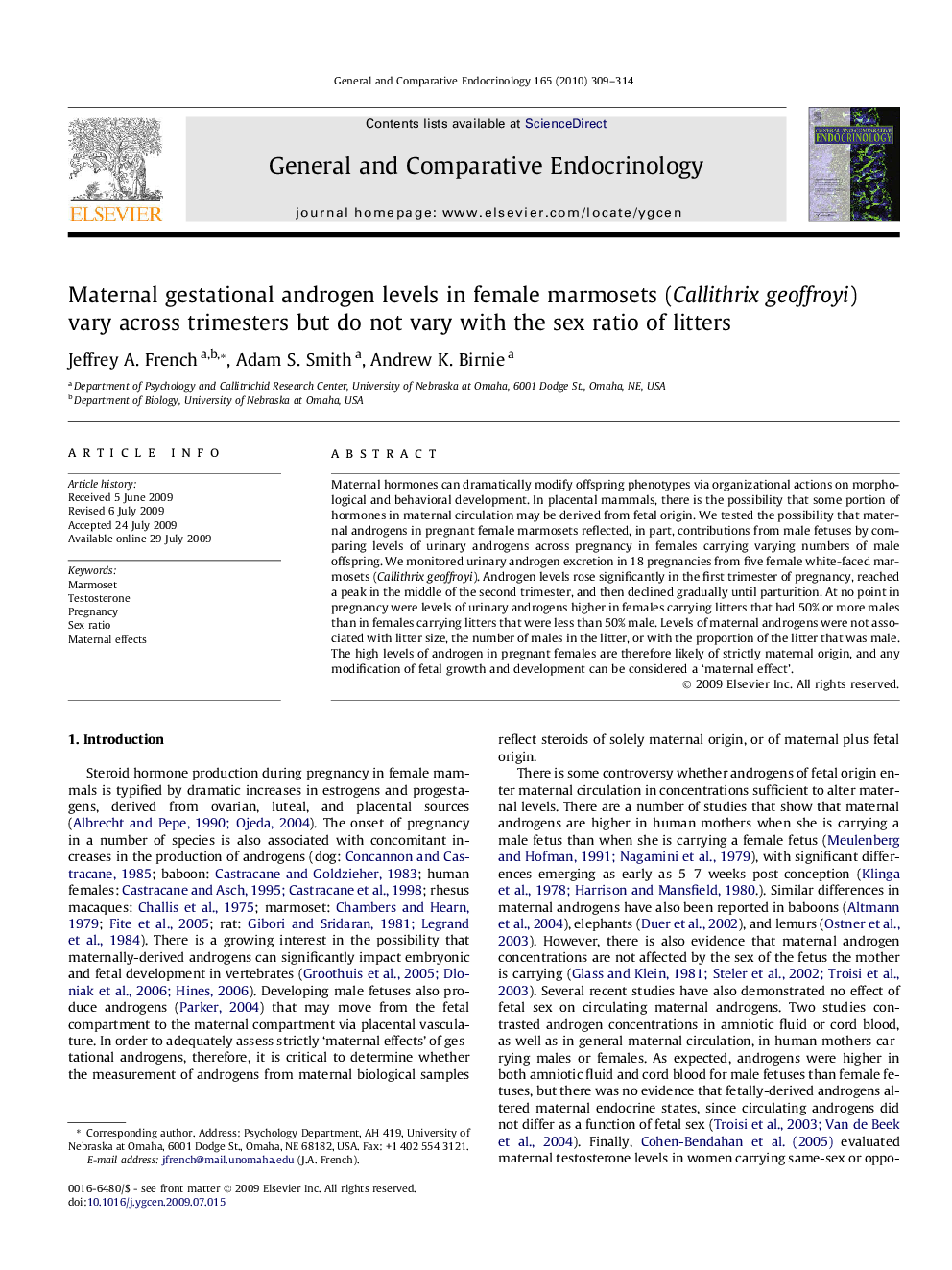| Article ID | Journal | Published Year | Pages | File Type |
|---|---|---|---|---|
| 2801457 | General and Comparative Endocrinology | 2010 | 6 Pages |
Maternal hormones can dramatically modify offspring phenotypes via organizational actions on morphological and behavioral development. In placental mammals, there is the possibility that some portion of hormones in maternal circulation may be derived from fetal origin. We tested the possibility that maternal androgens in pregnant female marmosets reflected, in part, contributions from male fetuses by comparing levels of urinary androgens across pregnancy in females carrying varying numbers of male offspring. We monitored urinary androgen excretion in 18 pregnancies from five female white-faced marmosets (Callithrix geoffroyi). Androgen levels rose significantly in the first trimester of pregnancy, reached a peak in the middle of the second trimester, and then declined gradually until parturition. At no point in pregnancy were levels of urinary androgens higher in females carrying litters that had 50% or more males than in females carrying litters that were less than 50% male. Levels of maternal androgens were not associated with litter size, the number of males in the litter, or with the proportion of the litter that was male. The high levels of androgen in pregnant females are therefore likely of strictly maternal origin, and any modification of fetal growth and development can be considered a ‘maternal effect’.
